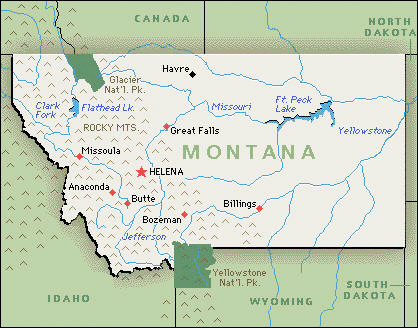By Jim Ellis

Montana
Montana holds its major statewide races in the presidential election year as opposed to the mid-term. In the state’s seven major statewide offices, Republicans currently enjoy a 5-2 edge, though Democrats hold the governorship and a US Senate office. In the 2012 election, however, the outcome was completely reversed as Democrats took five of the same seven positions.
With this background, a just-released research survey from Public Policy Polling (March 12-13; 903 registered Montana voters) tested a newly formed US Senate race between first-term Sen. Steve Daines (R) and Gov. Steve Bullock (D), along with the open at-large congressional contest. Both parties have contested primaries for the House, but state auditor and former US Senate nominee Matt Rosendale (R) and former state representative and 2018 congressional nominee Kathleen Williams (D) appear to be the favorites to win their respective party nominations.
The state is also hosting an open governor’s race, but the PPP poll did not test that campaign. The progressive left group End Citizens United sponsored the Public Policy Polling survey, and they sampled a universe that contained 37 percent self-identified Republicans, 32 percent Democrats, and 31 percent who describe themselves as Independents. It’s difficult to compare this sampling universe with the actual state electorate because Montana does not have party registration and the state features an open primary system.
That being said, the ballot test finds Sen. Daines and Gov. Bullock locked in a 47-47 percent tie, with an almost identical conclusion for a hypothetical pairing between Rosendale and Williams (45-45 percent).
The poll’s slant comes in push questions designed to create a negative image of all office holders, however. According to the segmented question results, 54 percent of the respondents believe “politicians in Washington support policies because they help corporate special interest groups who support or donate to their campaigns” most of the time. And additional 36 percent believe they do so sometimes.
This means that only seven percent believe their elected federal representatives rarely or never base their actions upon corporate contributor support. The remaining three percent are unsure. Hence, an anti-business skew is detected.
The other skew clue is revealed in the vote for president. When asked for whom the respondents last voted in the presidential campaign, 51 percent of the people answered Donald Trump, while 35 percent said they chose Hillary Clinton. The actual Montana vote was 56-35 percent, so the Republican support base in this research appears underestimated by several points.
Candidate favorability is another area to examine. According to this data, President Trump has a 50:46 percent positive to negative job approval rating; Sen. Daines posts a 45:42 percent ratio; and Gov. Bullock records 49:40 percent.
Public Policy Polling typically produces negative ratios for almost everyone they test. Therefore, the fact that all three men are in mediocre positive territory more than likely means each of their personal images are likely a few points better than these numbers suggest.
From day one, the Democratic leadership’s first choice was to recruit Gov. Bullock into the Senate race. Though it literally took them until the last day of the candidate filing period to persuade him to accept, the national party leaders succeeded, and now we have a new competitive race on the national board.
The Republican candidates should begin the post-primary contest as slight, but discernible favorites in all three of the aforementioned campaigns despite this poll’s projections, but upsets are certainly possible in each contest.
At this time, not knowing exactly how the COVID-19 virus and its related economic after-effects will change the 2020 political picture, it appears that virtually anything can happen in these and the many other contested political battles set to take shape around the country.
